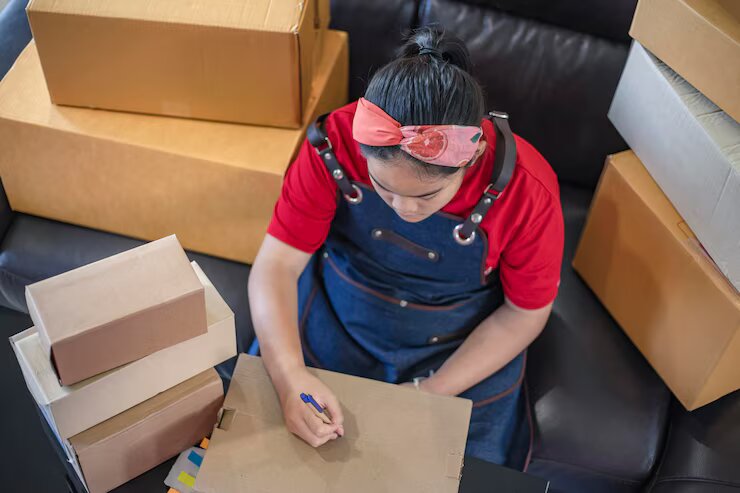Moving homes or offices doesn’t have to cost the Earth, literally. With climate concerns at an all-time high, adopting sustainable moving practices is more important than ever. Whether you’re relocating across the street or across the country, eco-friendly moving tips can help reduce your carbon footprint while making your move more efficient and cost-effective.
In this guide, we’ll walk you through sustainable packing ideas, green moving solutions, and environmentally friendly packing tips to make your next relocation smooth and sustainable.
Why Choose Sustainable Moving?
Traditional moving involves a lot of waste, think plastic wraps, cardboard boxes, bubble wrap, and excess fuel usage. Sustainable moving focuses on reducing this impact through smarter choices. By going green, you can:
- Cut down on waste
- Save money on packing supplies
- Contribute to a healthier planet
- Support eco-conscious businesses
With the right planning and mindset, your move can be just as efficient—and a whole lot greener.
1. Declutter Before You Pack
The fewer items you move, the less packaging and transportation you’ll need. Begin your move by donating, selling, or recycling things you no longer need. This simple step not only lightens your load but also supports a sustainable lifestyle by keeping usable items out of landfills.
Pro Tip: Host a garage sale or list items online to give your old belongings a new life.
2. Opt for Reusable Containers
Instead of buying brand-new cardboard boxes, consider renting reusable plastic bins. These containers are durable, stackable, and don’t end up in the trash after one use. Many green moving solutions providers offer affordable bin rental services with delivery and pickup included.
If you must use cardboard, source used boxes from grocery stores, offices, or community groups to minimize waste.
3. Use Eco-Friendly Packing Materials
Traditional bubble wrap and packing peanuts are harmful to the environment. Swap them for sustainable packing ideas like:
- Biodegradable packing peanuts
- Recycled paper
- Towels, blankets, and clothing (double-duty!)
- Corrugated bubble wrap made from upcycled cardboard
These environmentally friendly packing tips help protect your items while reducing the ecological cost of your move.
4. Recycle Packing Materials After the Move
Once your move is complete, don’t toss those boxes or papers. Recycle, reuse, or donate them. Some moving companies and community centers accept lightly used packing supplies. Consider storing boxes flat for your next move or offering them online for free.
This small act supports a circular economy and encourages others to adopt eco-conscious habits too.
5. Choose a Green Moving Company
Many moving companies today offer green moving solutions that align with your sustainability goals. Look for companies that:
- Use biodiesel or electric moving trucks
- Offer reusable containers
- Offset carbon emissions
- Train staff in eco-friendly practices
Before booking, ask about their sustainability policies. Your support encourages more businesses to adopt environmentally responsible practices.
6. Pack Efficiently to Save Space and Fuel
The more efficiently you pack, the fewer trips are needed, saving fuel and money. Use every inch of box space and fill gaps with soft materials like socks or towels. Label boxes clearly to avoid unnecessary unpacking and repacking.
Smart packing not only protects your items but also supports eco-friendly moving tips by reducing transport emissions.
7. Move During Off-Peak Hours
Moving during less congested times, early morning or mid-week, helps reduce time spent in traffic, saving fuel and lowering emissions. Fewer vehicles on the road also means safer, faster transportation for your movers and belongings.
Plan your moving day strategically to ensure both environmental and personal efficiency.
8. Avoid Single-Use Items
During the move, it’s easy to rely on disposable plates, cutlery, and water bottles. Plan ahead to use reusable alternatives. Pack a “moving day kit” with refillable water bottles, washable dishes, and snacks in reusable containers.
It’s a small change that reflects a big commitment to sustainable living.
9. Donate Leftovers from the Move
If you have leftover cleaning supplies, unopened pantry items, or tools, consider donating them to local shelters, neighbors, or donation centers. Avoid throwing them away unnecessarily.
A mindful move reduces waste and helps those in need.
10. Offset Your Move’s Carbon Footprint
Calculate the emissions generated from your move and offset them through verified programs. Many online platforms allow you to fund renewable energy or reforestation projects that balance your environmental impact.
Offsetting is the final touch in a fully eco-conscious relocation plan.
Final Thoughts
Moving sustainably may require a bit more planning, but the environmental and personal rewards are worth it. By integrating eco-friendly moving tips, embracing sustainable packing ideas, and using green moving solutions, your transition becomes an opportunity to do good for yourself and the planet.
A sustainable move is more than a trend—it’s a responsibility. Let’s make moving not just about where you’re going, but how you get there.
FAQs
1. What are some eco-friendly alternatives to bubble wrap?
Instead of bubble wrap, use biodegradable packing peanuts, recycled paper, corrugated cardboard rolls, or even household items like towels and sweaters. These options are just as effective at protecting fragile items and eliminating the need for plastic. Adopting environmentally friendly packing tips like these helps reduce landfill waste and supports a more conscious, green move.
2. Are there moving companies that specialize in green relocations?
Yes, several moving companies now offer green moving solutions. These include using fuel-efficient trucks, providing reusable bins, and offering carbon offset programs. When choosing a moving company, ask about their sustainability practices to ensure they align with your eco-conscious goals.
3. How can I reduce waste when packing for a move?
Start by decluttering, donating or recycling items you no longer need. Use reusable containers or second-hand boxes. For padding, repurpose towels, linens, or old newspapers. After your move, recycle or pass along supplies. These eco-friendly moving tips ensure minimal waste during your transition.
4. Is renting plastic moving bins really better than cardboard?
Yes. Renting plastic bins is a top sustainable packing idea because they’re reused dozens of times before recycling. They’re sturdier, weather-resistant, and stack efficiently, reducing the number of trips needed. In contrast, cardboard boxes often degrade after one or two uses and may end up in landfills if not properly recycled.
5. What’s a carbon offset, and how does it relate to moving?
A carbon offset compensates for the emissions generated during your move by investing in environmental projects like reforestation or clean energy. You can calculate your move’s carbon footprint using online tools and choose a verified offset program. It’s a great way to make your relocation a part of broader eco-friendly moving tips.







